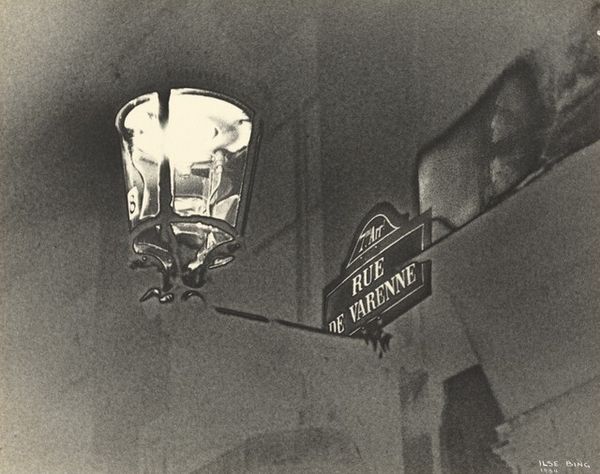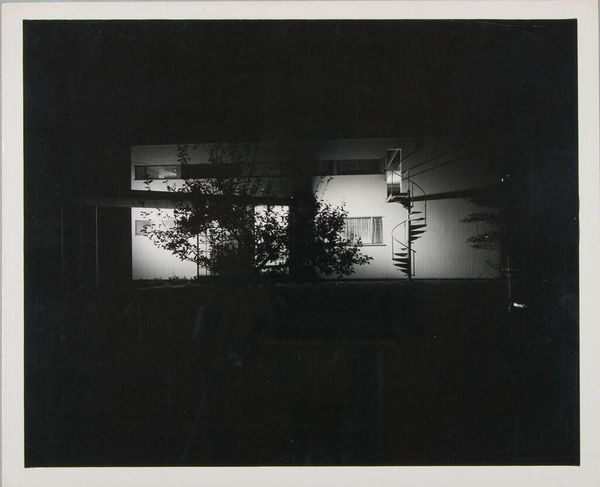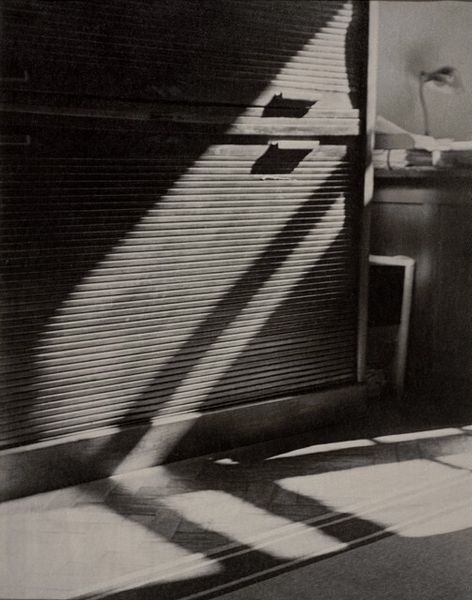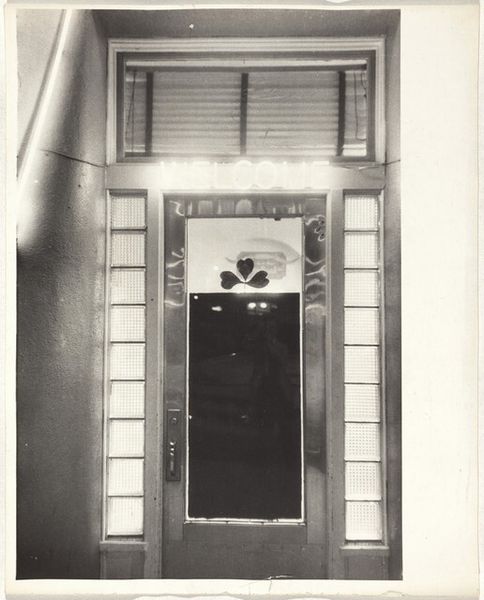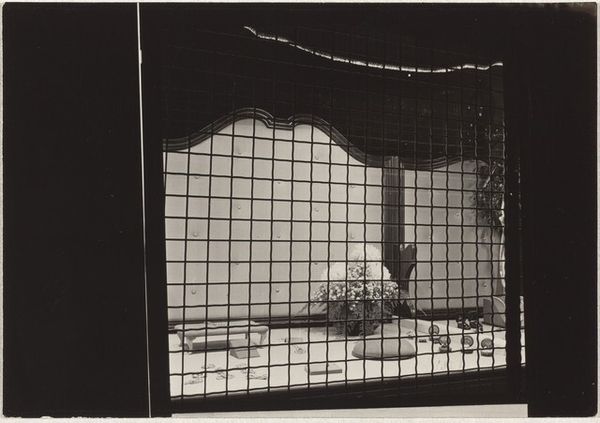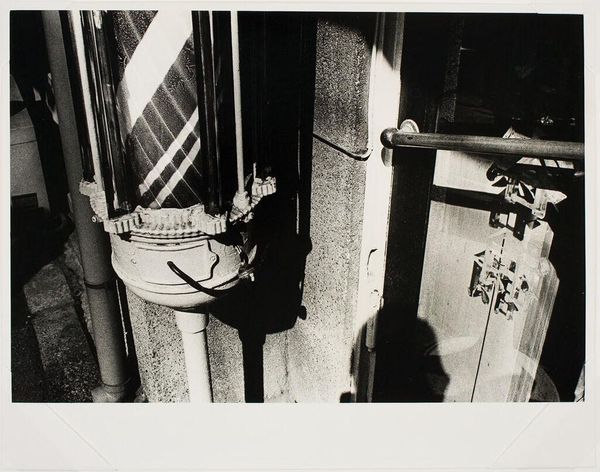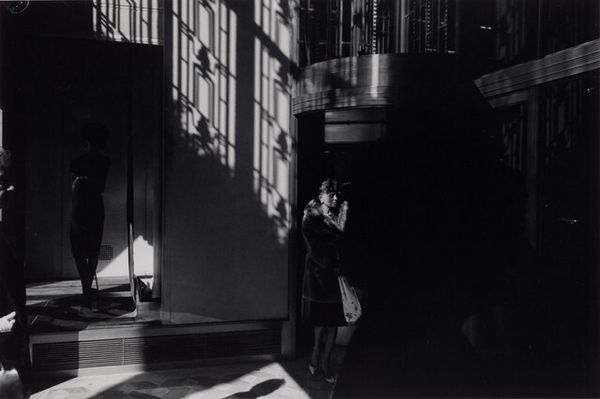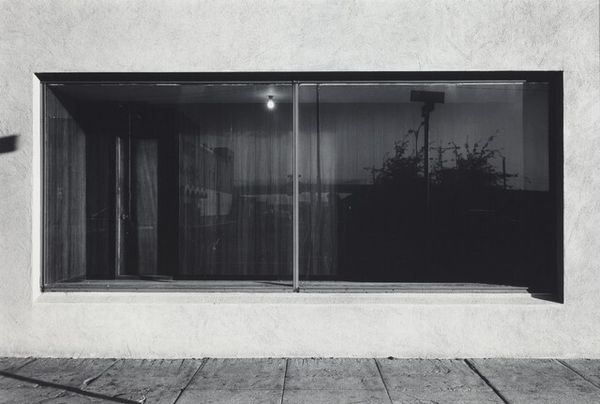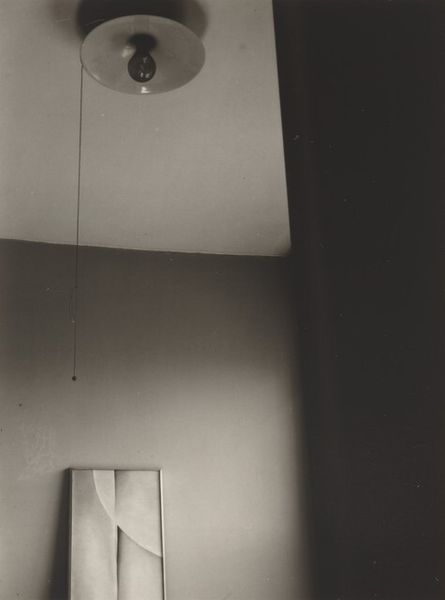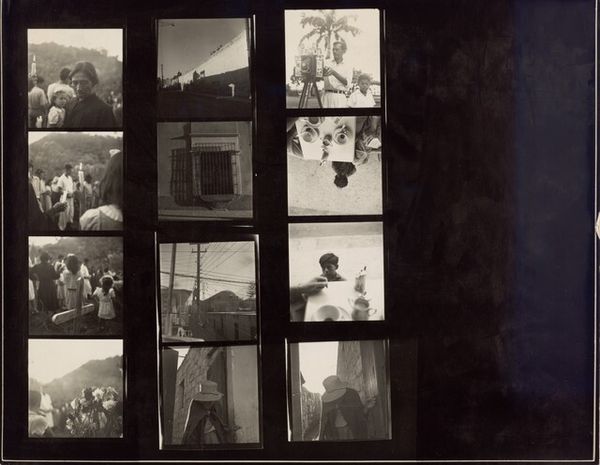
Dimensions: overall: 20.3 x 28.1 cm (8 x 11 1/16 in.)
Copyright: National Gallery of Art: CC0 1.0
Editor: Ilse Bing’s "Rue de la Chaise, Paris," taken in 1934, offers a stark, black and white view of a Parisian street. It feels almost theatrical, with the strong contrast between light and shadow. What story do you think Bing is trying to tell? Curator: The drama in Bing's photograph resonates deeply with the socio-political climate of the 1930s. The stark contrasts aren't merely aesthetic choices. They highlight the growing divides in society—the visible and the hidden, the illuminated and the obscured. Consider the architecture itself; it’s a framework reflecting power. How might these visual elements comment on issues like class, surveillance, or even the rise of authoritarianism that defined the period? Editor: So the barred window, the shutters, it’s all deliberate, to provoke thoughts about control? Curator: Absolutely. Bing was working within a modernist context, yet her images are far from apolitical. What does it mean to frame domestic space in this way, especially during a period marked by anxieties around privacy, security, and the encroaching public sphere? The lamplight could signify knowledge, but also, starkly, expose vulnerability. What is illuminated, and who benefits? Editor: I hadn’t considered how the formal elements of the photograph could carry such weight! Curator: Art often holds up a mirror, reflecting not only what is seen, but also prompting reflection on the unseen structures shaping our world. Bing’s image prompts us to ask: who has a voice, who is silenced, and whose story gets told? Editor: It’s amazing how much context a seemingly simple cityscape can hold. I'll never look at street photography the same way again. Curator: Precisely! Seeing art as a dynamic participant in history allows for a richer, more nuanced experience.
Comments
No comments
Be the first to comment and join the conversation on the ultimate creative platform.

